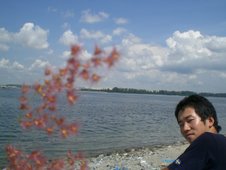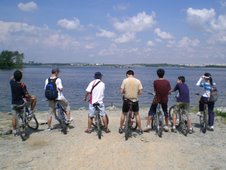The most important period in Singapore history
I. Introduction
The history before the arrival of Sir Stamford raffles, colonial times and the time from independence and forth on are three main periods in Singapore history. The colonial times from the arrival of Raffles to the early 20th century is the most crucial period in Singapore history. On one hand the history before 1819 had little direct influence on today. Like the history of U.S, the period before arrival of May Flower contributed little to today’s U.S which is of the white culture, the white politics and economy now. On the other hand, today’s Singapore is of a continuous development of the development under British Empire. Thus, the period from 1819 to the early 20th century is the fundamental of today’s Singapore in social, economy and culture dimensions.
II. Why this period is important
The phase of history that contributed most to or had greatest influence on today is most worth studying, especially for a country with a short history. Singapore has a short history, the plot was not so complex and we can easily find the relationship between one period and another period. 1.Kwa Chong Guan pointed out that Singapore history is much about what happened on the island. However, little happened in the period before arrival of Stamford raffles. Thus, the history before 1819 has little relationship with today. The phase from 1819 to the early 20th century is the fundamental of today’s Singapore in social, economy and culture dimensions. At that time, 2. European elements in the region also lay important networks of trade, culture and political influence. Roughly, the money earned from trade and port service is the largest income of Singapore government today and Singapore is famous for its great port. The growth of port was also a main plot of colonial times. Today, Singapore has four main races, which started forming from this period. Today, Singapore has diverse culture, but most things that are standard are of British pattern. From this aspect, we cannot ignore the colonial times.
(1) The development of port and economy
During this time, Singapore developed from a village to a global port city and the developing patterns and policy still influence today’s Singapore. This period was colonial times, so let us see what British did for the development of Singapore.3. Firstly, British established a tie between Singapore and British Empire trading activities, which provided Singapore convenience to develop as a colonial port. Secondly, the continuous technological change and development of port facilities made Singapore available to serve the more and more advanced ships. Thirdly, the capitals provided by British and other Europeans made Singapore competitive. Fourthly, since the arrival of raffles, Singapore has been a free port. With these factors, the development of Singapore is very fast and a total trade of around4. $11 million in the early years had grown to $55 million by early 1860s and $1200 by late 1920s when Singapore is really a global port. Without this period, how Singapore could develop into a global city today? Moreover, let’s look at today’s Singapore. The free port policy has been persisted up to now. There are great berthing facilities, great airport, many insurance companies, banks, financial companies and agency. Singapore also focuses on maintaining as connecting centre around world to maintain the global port. We can see that today’s policy and developing patterns are based on the development experience in colonial times which had successfully made Singapore a star city. Therefore, the history from 1819 to early 20th century was most important to the aspect of the development of port and economy.
(2) The development of society.
From population and races point, in colonial times, Singapore was forming a multiracial society like today. The booming economy in 19th and early 20th century should have been sustained by enough labours. Thus, many migrants came to Singapore in 19th century. Population grew from around 16,000 in 1827 to over 80,000 by 1860 and 65% of that population were migrants from China working here as coolies. There were also a lot of people from India and Malaysia to work in Singapore as craftsman, soldiers, wage earners, public workers and traders. From this period, Singapore’s society became a diverse society with three main races, Chinese, Malays and Indians. Because governors at that time were mostly British, today’s population also includes %1 Europeans. We can see what Singapore society is like today from that period. Therefore, from the aspect of development of society, the colonial time is very important.
(3) The culture
A nation should have common spirit and culture. The colonial time was just the period when mainstream culture today was formed. Although Singapore is a multiracial society and has diverse culture, but the main one is British culture. During the colonial time, British were high class and governors, so British culture and English became the mainstream gradually. Language is a very important form of culture. In today’s Singapore, all the students are educated in English. Papers and publishes are mostly in English. Moreover, education system, government system are inherited from British. Most spiritual value is also western value. Today’s Singapore’s culture is totally different from 200 years ago because of the colonial history. Therefore, from culture aspect, the history from 1819 to early 20th century is important.
III. Conclusion
Singapore is a very unique country. We cannot understand today’s Singapore without knowing the history after the arrival of sir Stamford raffles until Singapore was abandoned by Britain before World War II. Singapore is a small country, how come it can be so prosperous? What’s the ‘trick’ that Singapore became a global port state? What was the developing process? How come does Singapore have so many Chinese and consist of four main races? How come English is the most popular language while most citizens are Asians? The answer can be mostly found in the period between 1819 and early 20th century.
1. Kwa Chong Guan. Early Singapore 1300s-1819.chapter 6, sailing past Singapore, p.183. [reading material]
2. Colonial intensification and the rise of Singapore.p.117.[reading material]
3. Colonial intensification and the rise of Singapore.p.107.[reading material]
4. Colonial intensification and the rise of Singapore.p.108.[reading material]
artistry picture

it is me!
Tuesday, October 16, 2007
Subscribe to:
Posts (Atom)


